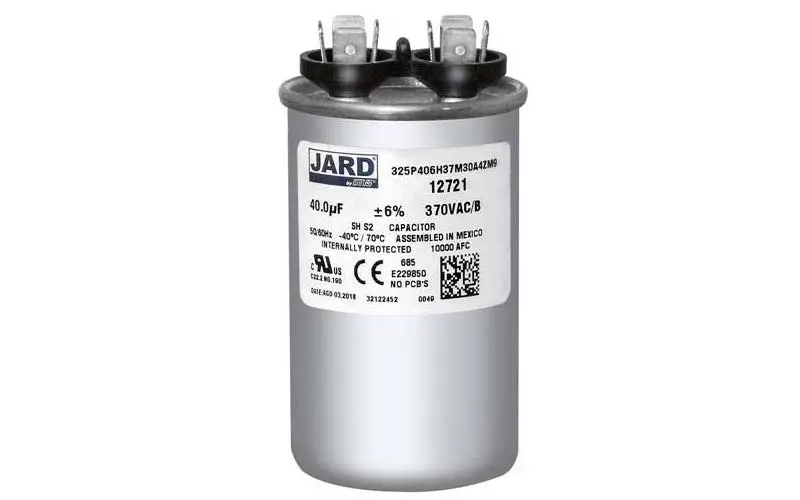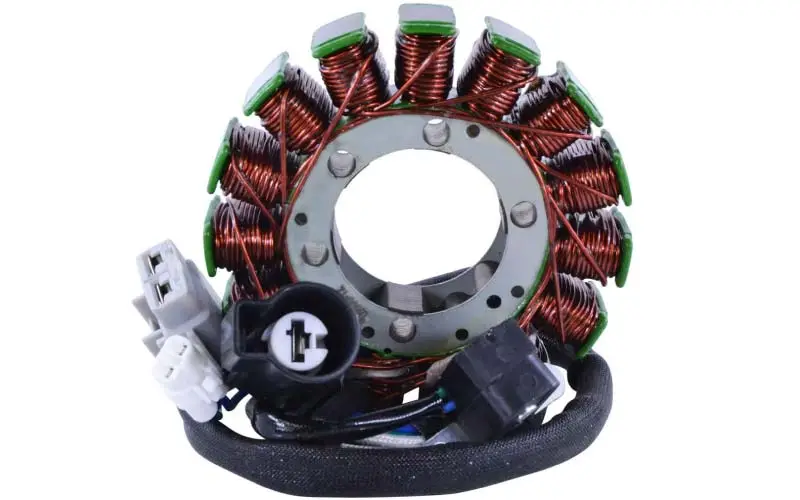Generator Output Voltage Too High – [5 Causes & DIY Fixes]
A generator’s high voltage output could not only melt down the circuits or vital organs of the voltage-sensitive appliances but also be a great threat to humans as well.
To avoid expensive repairs down the road the generator’s overvoltage is a serious problem that should be addressed as soon as possible.
This guide is all about troubleshooting the generator’s high voltage output and Steps to fix it without hiring a professional.
Generator Output Voltage Too High – [5 Cauese With Easy Fixes]
Below are the potential causes of the generator producing high voltage output with DIY fixes.
1. Unstable/Extremely High RPM/Engine Speed:
The engine’s Speed/RPM directly impacts the generator’s output voltage; if it’s unstable the generator will not provide the desired voltage, Also if the RPM is too high you will have to face overvoltage.
Most of the generators have an engine bolt or idle screw to control the RPMs, however, if it’s not controlled by them, you have to inspect the filters (air and fuel), carburetor, fuel lines, etc.
Clogged filters and fuel lines may block the flow of fuel and air to the combustion chamber of the generator, causing improper combustion that leads to unstable RPMs.
- Clean the filters (Air and Fuel), fuel lines, and carburetor to ensure the generator gets Balanced air and fuel mixture.
- Take a voltmeter if your generator doesn’t have a built-in one, locate the engine or idle screw, and adjust it gently with the help of a flathead screwdriver. Also, monitor the voltage on the voltmeter as well.
- Keep turning the screw till the generator attains the desired output voltage.
2. Bad/Non – Calibrated AVR:

An automatic Voltage regulator (AVR) is an electronic device that senses the voltage and stabilizes it before supplying it to the generator’s control panel. If it’s not adjusted or busted the generator may provide objectionable voltage output
Disconnect the AVR and inspect its physical condition to ensure there is no rust or loose connections, use a multimeter to test the AVR’s functionality, if it’s not working properly make sure to replace it.
Also, we recommend adjusting the voltage of the AVR with the help of a potentiometer.
3. Faulty or Loose Cables:
Worn-out cables with cracked insulations or loose connections could be a potential reason for an increase in the internal resistance resulting the short circuits and a significant surge in the output voltage.
Inspect the important wiring running from the AVR to the control panel, if you find them loose or damaged, make sure to replace them.
NOTE: The process of inspecting or replacing the whole generator’s wiring is a bit technical procedure and may need professional assistance.
4. Bad Capacitor:

Like an AVR, a capacitor is also responsible for controlling the output voltage of the generator; if it’s faulty or malfunctioning the output voltage will be high/undesirable.
Like AVR, the Capacitor is also located inside the end or stator cover of the generator, All you need to do is a physical inspection of the capacitor and conduct necessary Readings with the help of a multimeter, if you find something imbalanced make sure to replace it.
5. Faulty Rotor or Stator:

Over time the stator’s windings or rotor may develop faults due to factors like cracked windings, overheating, etc., that lead to a higher output voltage.
Inspection of the windings isn’t a newbie task, still, you can do the below tests at home to make sure whether the windings are the culprit or not.
- Remove the end cover and inspect the physical condition of the winding, If you find them burned or broken probably the windings are the culprit.
- Take a multimeter and test windings, If you have infinity or high resistance the stator’s winding is bad
NOTE: Inspection of the generator’s windings requires advanced knowledge, if you aren’t aware of how to test or deal with the generator’s winding we recommend hiring an experienced generator mechanic.
Recommended Read: Why is my generators voltage is too low?
What Happens if Generator’s Voltage Is Too High?
Here is the guide about high voltage safety from the UNIVERSITY of WISCONSIN–MADISON.
Test The Generator Output Voltage Before Connecting The Loads
We recommend monitoring the generator’s output voltage with the help of a voltmeter before connecting any appliance.
If you suspect that the generator is producing overvoltage then usual, don’t connect the appliances.
Most of the generators have a built-in voltmeter, however, if your machine doesn’t have one, you can purchase a small voltmeter within the range of $5 – $8.
What Voltage Should a Generator Run At?
It depends on the specific application and electrical needs, however, 120 or 240 volts are considered the standard voltages for both portable and standby home generators.
Verdict
A generator with higher voltages could be a silent killer for voltage-sensitive appliances like laptops, chargers, inverters, etc. If you suspect the generator is producing higher voltage than usual fix it as soon as possible to avoid any damage.
We recommend monitoring the generator’s output voltage before connecting any appliance.
I hope we have delivered what we promised, if I am missing something please let me know in the comment section, and I will be more than happy to assist you!
Frequently Asked Questions – FAQs
Is High Voltage a Problem?
Yes, higher voltage could not only melt the vital organs of your expensive voltage-sensitive appliances but also pose a risk of firing and electrocution.
Where Is the Voltage Regulator on a Generator?
In the case of portable generators, you will find the AVR inside the end or stator cover, however, standby/whole house machines contain the AVR inside the terminal box or control panel.
How Do You Measure Voltage on a Generator?
I mostly measure with the help of a brandable voltmeter/multimeter, however, you can monitor it from the in-build voltmeter, or you can get a separate one.

Kashif has been a valuable asset to the electric generator industry for over 5 years. Now, As a skilled energy engineer, he’s been on the front lines of diagnosing problems, fixing broken parts, and performing routine maintenance tasks to keep generators running smoothly.
